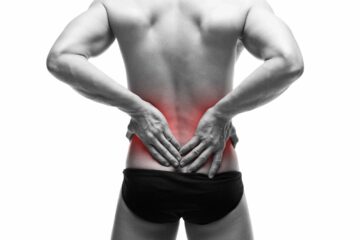Hey there, if you’ve read the clinics previous post on What is Acupuncture and How Does It Work?, you know we touched on the basics of this ancient practice. But I wanted to dive deeper because so many of you have reached out with questions about the science behind it. Whether you’re dealing with chronic pain, stress, or just curious about holistic health options, understanding the “why” can make all the difference. In this follow-up, we’ll explore the major theories of how acupuncture works and explore that in-depth. My goal is to empower you with knowledge so you can make informed decisions about your well-being. Remember, I’m not a doctor but I am a licensed practitioner of Chinese medicine, and I’m passionate about sharing what the research says. Let’s get into it!
The Foundations: Traditional Theories of Acupuncture
Acupuncture has roots stretching back over 2,000 years in Traditional Chinese Medicine (TCM). At its heart is the concept of Qi (pronounced “chee”), which is often described as the vital life energy flowing through our bodies. Imagine Qi as a gentle river that nourishes every cell, organ, and system. When this flow gets blocked or imbalanced—maybe from stress, injury, or poor lifestyle choices—it can lead to discomfort, illness, or fatigue. TCM practitioners use acupuncture (and sometimes herbal formulas) to restore that balance by inserting thin needles into specific points along pathways called meridians.
These meridians are like invisible highways connecting different parts of the body. There are 12 main meridians, each linked to organs like the liver, heart, or lungs. The idea is that stimulating these points unblocks stagnant Qi, harmonizes Yin and Yang (the opposing forces of energy), and promotes natural healing. It’s a holistic view that sees the body as interconnected, not just a collection of isolated symptoms. While this might sound like poetic nonsense, it’s been the guiding principle for millions seeking relief.
But how does this align with modern science? Modern day scholars have been bridging the gap, suggesting that meridians might correspond to fascial planes or neural pathways in the body. For instance, a review in the Journal of Acupuncture and Meridian Studies explores how these ancient concepts could relate to contemporary anatomy. If you’re intrigued, check out this insightful journal for more on meridian theories.
Modern Scientific Theories: What the Research Reveals
Moving from tradition to science, let’s talk about how researchers are explaining acupuncture’s effects today. It’s not magic—it’s biology! One of the most accepted theories is the neurohormonal mechanism, where acupuncture stimulates the release of natural painkillers in your body. Think about those feel-good endorphins that kick in after a good workout; acupuncture seems to trigger something similar.
A systematic review of clinical trials found that the dominant rationale for acupuncture’s pain relief is the release of neurochemicals like beta-endorphins, enkephalins, and serotonin. These substances help dampen pain signals and promote a sense of well-being. In fact, 62% of studies proposing a mechanism pointed to this neurochemical pathway. This isn’t just theory—brain imaging studies show acupuncture activating areas involved in pain modulation. If you’ve ever felt that deep relaxation during a session, this could be why.
Another key theory is the Gate Control Theory of Pain, proposed back in the 1960s but still relevant. It suggests that acupuncture needles stimulate nerves that “close the gate” on pain signals traveling to the brain. By overwhelming the nervous system with non-painful input, it reduces the perception of discomfort. This ties into segmental nervous system effects, where stimulation at one level of the spine influences nearby areas.
Then there’s the anti-inflammatory angle, which is super exciting for conditions like arthritis or autoimmune issues. A Harvard Medical School study discovered that acupuncture activates specific neurons in the hindlimb, triggering an anti-inflammatory response via a signaling pathway. In mice, it even tamed cytokine storms—the over-the-top immune reactions seen in severe illnesses. This could explain why acupuncture helps with inflammation-related pain without the side effects of meds. Imagine your body having its own built-in anti-inflammatory tool, just waiting to be activated!
Diving deeper, purinergic signaling is emerging as a hot topic. When needles are inserted, they cause a tiny bit of tissue response, releasing ATP (adenosine triphosphate), which breaks down into adenosine. This binds to receptors that ease pain and reduce inflammation. Studies on mast cells—those immune cells in our skin—show they degranulate more at acupoints, enhancing the effect. Transient receptor potential vanilloid (TRPV) channels act as sensors for the needle’s mechanical or heat stimulation.
Acupuncture also influences the autonomic nervous system, balancing the “fight or flight” sympathetic response with the calming parasympathetic one. This can lower heart rate, improve digestion, and even boost immune function. For example, it modulates the hypothalamic-pituitary-adrenal (HPA) axis, reducing stress hormones like cortisol. Recent findings suggest non-opioid pathways too, like orexin-endocannabinoid circuits in the brain for analgesia.
Local effects shouldn’t be overlooked either. Needles create micro-injuries that increase blood flow, promote healing, and release healing factors. This is particularly useful for musculoskeletal issues. A comprehensive review highlights how acupuncture’s mechanics—from skin penetration to tissue stimulation—elicit these responses.
Neuroimaging adds another layer, showing acupuncture reversing maladaptive brain changes in chronic pain patients.
Overall, these theories paint a picture of acupuncture as a multi-faceted therapy that taps into your body’s innate healing abilities. It’s empowering to know that something so gentle can have such profound effects.
Summaries of Recent Studies: The Good, the Mixed, and the Promising
Now, let’s look at what recent research says about acupuncture’s effectiveness. I’ll focus on studies from 2020-2025, including meta-analyses that pool data for stronger conclusions. These come from reputable journals, and I’ll link them so you can read more. Remember, science is ongoing, and results can vary, but the trend is encouraging for many conditions.
First, a 2025 meta-analysis on acupuncture for type 2 diabetes examined 21 randomized controlled trials with over 2,000 participants. It found that acupuncture significantly lowered fasting blood glucose, 2-hour postprandial glucose, and HbA1c levels when added to standard care. It also improved insulin sensitivity and lipid profiles. The conclusion? Acupuncture can help manage diabetes symptoms, though more studies are needed to pinpoint why some results vary. This is great news if you’re navigating blood sugar challenges—imagine a natural boost alongside your meds. Check out the full study in Frontiers in Endocrinology.
For osteoporosis, a 2025 systematic review of 40 trials from China showed acupuncture improving bone mineral density, reducing pain (via VAS scores), and boosting clinical effectiveness rates. It was especially effective for pain relief, with standardized mean differences showing meaningful reductions. Safety-wise, no major adverse events were reported, making it a low-risk option. However, the studies’ geographic limitation calls for broader research. If bone health is a concern as you age, this suggests acupuncture could support your journey.
Read more in the Journal of Orthopaedic Surgery and Research.
Depression is another area where acupuncture shines. A 2024 meta-analysis of 20 RCTs compared acupuncture alone to medications and found it more effective in reducing Hamilton Depression Rating Scale scores, with fewer side effects. After four weeks, participants saw significant improvements, highlighting acupuncture’s potential as a standalone therapy. The study notes the need for optimal acupoint selection, but the low adverse event rate is reassuring. If you’re feeling low, this could be a gentle path to explore. Dive into the details at Frontiers in Neuroscience.
Chronic low back pain affects so many, and a 2025 network meta-analysis of 63 trials confirmed acupuncture’s benefits. Individualized acupuncture and combinations like electroacupuncture with lumbar-pelvic training reduced pain intensity and improved function more than placebos or standard care. Effects were clinically meaningful, especially in multimodal approaches lasting 6-12 weeks. While heterogeneity exists, the overall positive outcome supports acupuncture for back pain relief. See the study in Heliyon.
Not all news is unequivocally positive—science is honest that way. A 2022 BMJ analysis of over 2,000 systematic reviews found strong evidence for acupuncture in conditions like low back pain, fibromyalgia, and allergic rhinitis, with moderate to large effects. However, it points out that this evidence is underused in guidelines and policies. For some areas like opioid disorders, effects are promising but low-certainty, needing more funding. Six conditions showed no effect, reminding us acupuncture isn’t a cure-all.
This balanced view helps set realistic expectations. Explore it further in the BMJ.
Finally, a 2025 review of meta-analyses (2017-2022) concluded positive effects for 10 conditions, including chronic pain, migraines, and cancer-related fatigue, with potential for 82 more. It emphasizes acupuncture’s safety and calls for its broader consideration. Mixed results in some areas stem from trial quality, but the growing evidence base is heartening.
Find the full review in Complementary Therapies in Clinical Practice.
Recommended Books for a Deeper Dive into Acupuncture Science
If you’re eager to explore acupuncture further, books can offer a wealth of knowledge, blending traditional wisdom with modern research. Here are five excellent reads for high school or college students, or anyone curious about the science behind acupuncture. Each provides a unique perspective, from clinical insights to historical context, and they’re written to engage and inform without overwhelming.
- “The Spark in the Machine: How the Science of Acupuncture Explains the Mysteries of Western Medicine” by Dr. Daniel Keown – Dr. Keown, a Western-trained doctor and acupuncturist, bridges TCM and modern biology. He explains how meridians align with fascial planes and how Qi relates to cellular processes. It’s accessible, with real-world examples, perfect for understanding the science behind the needles. Available at major bookstores or Amazon.
- “Acupuncture Points: Images and Functions” by Arnie Lade – This book dives into the anatomy and function of acupuncture points, blending TCM theory with practical applications. It’s great for visual learners, with clear diagrams and explanations of how points influence health. Ideal for students wanting a hands-on perspective. Find it at Amazon.
- “The Web That Has No Weaver: Understanding Chinese Medicine” by Ted J. Kaptchuk – A classic, this book explores TCM’s philosophy and how it intersects with Western science. Kaptchuk unpacks Qi, meridians, and clinical practice with warmth and clarity, making it a must-read for anyone curious about acupuncture’s roots and evidence. Check it out at Amazon.
- “Acupuncture Research: Strategies for Establishing an Evidence Base” by Hugh MacPherson – For those leaning toward the research side, this book details how acupuncture studies are designed and interpreted. It covers clinical trials, neuroscientific findings, and challenges in evidence-based practice. It’s a bit technical but great for college students interested in the scientific method. Available at Amazon.
- “Between Heaven and Earth: A Guide to Chinese Medicine” by Harriet Beinfield and Efrem Korngold – This book offers a compassionate, holistic look at acupuncture and TCM, weaving in scientific insights with patient stories. It’s engaging and perfect for readers wanting a balance of heart and science. Find it at Amazon.
Wrapping It Up: Your Path Forward
Whew, we’ve covered a lot—from ancient Qi flows to cutting-edge neuron studies, real-world trial outcomes, and a few books to keep your curiosity alive. Acupuncture isn’t just an old remedy; it’s evolving with science, offering hope for pain, mood, and more. Of course, results vary, and it’s best combined with professional medical advice. If this resonates, talk to a licensed acupuncturist—they’re there to support you with compassion.
I hope this deeper look helps you feel more connected to your health options. You’re not alone in seeking natural ways to thrive. Stay well!

